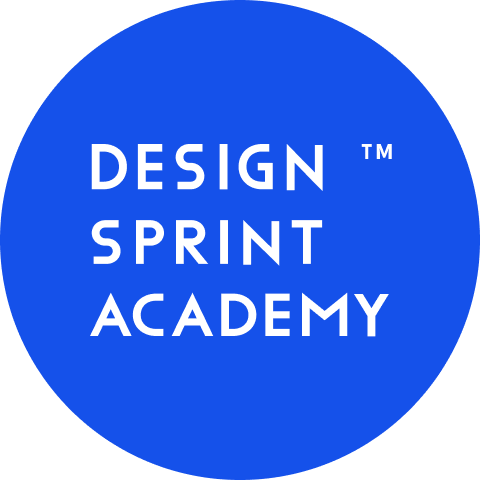Design Sprints - the Google Way

The concept of design sprints has been pivotal in shaping the landscape of project development, especially at Google. Google has been at the forefront of evolving and refining the design sprint methodology for more than 10 years. We wanted to uncover how Google, a company of such magnitude, has tailored the design sprint process to its unique environment.
We had the opportunity of conversing with Felix Wang, a key figure in Google's Design Relations team. As a seasoned UX designer and a facilitator at Google's Design Sprint Master Academy, Felix plays a crucial role in shaping how design sprints are conducted across the organization. His insights provided a window into how Google has not only adopted but also adapted the design sprint methodology, a technique that originally took root within the company's walls.
So, what exactly is a design sprint at Google?
Originating from the halls of Google Ventures, a design sprint is a structured framework that allows teams to address critical business questions through a rapid cycle of designing, prototyping, and testing ideas with users.
This methodology is rooted in the principle of conserving resources, avoiding the pitfalls of extensive resource allocation before validating ideas.
At Google, the design sprint process encompasses six distinct phases – Understand, Define, Sketch, Decide, Prototype, and Validate – each carefully orchestrated to ensure efficient and effective problem-solving.

Tailored to fit different Google teams
Google’s adaptation of the design sprint is not a one-size-fits-all model; it's tailored to meet the nuanced needs of various teams and projects.
- Google X: Google X focuses on ambitious and futuristic moonshot ideas. With small, nimble teams and a bottom-up culture, they have the flexibility to quickly organize groups around specific projects and then move on to the next mission.
- Google Ventures (GV): GV operates more like an agency where founders bring their early-stage ideas to be tested. A culture of relying on a single decider or decider role helps guide the sprint process within Google Ventures.
- Ads & Commerce: This team deals with established, complex, and data-driven products, carrying a high risk of mistakes. Their design sprint process heavily emphasizes experimentation and incorporates the engineering perspective.
- Corp Eng: The Corp Eng team focuses on developing internally facing software projects. With limited UX resources and an engineering-centric culture, they prioritize co-creation models and leverage easy access to users within the Google ecosystem. Given the large team size and multiple stakeholders, their sprints tend to be larger in scale.
Design Sprints, the Google Way
The Google way of conducting design sprints begins with a comprehensive Sprint Brief, detailing the challenge, goals, user types, platform considerations, and timelines.
The team structure is equally important, ideally comprising cross-functional members to bring diverse perspectives to the table.
The six phases of the Google design sprint are methodically executed, each contributing to a holistic understanding of the problem, ideation, decision-making, prototyping, and user validation. Moreover, extensive planning and follow-up actions are integral parts of the process, ensuring the sprint's success and impact.
- Understand: In this phase, the team unpacks the problem and creates a shared knowledge base. Techniques like "How Might We" (HMW) exercises, user interviews, lightning talks, and experience mapping are used to gain a comprehensive understanding of the problem space.
- Define: The team aligns on principles and scopes out the ideal user journey. Activities such as user journey mapping, defining design principles, establishing success metrics, and using tools like value proposition and business model canvases help shape a clear understanding of the product's purpose and objectives.
- Sketch: This phase focuses on generating a broad range of ideas within a time-boxed format. Techniques like Crazy-8 sketching, comparable problem analysis, and solution sketching are employed to rapidly generate a variety of ideas.
- Decide: In this phase, the team votes and decides on the ideas to pursue further. Methods like dot voting and decision matrices assist in selecting the most promising concepts that align with the sprint goals.
- Prototype: The team creates a tangible representation of the chosen ideas. Depending on the project type, physical products can be prototyped using materials like cardboard or clay, while software-driven products may involve clickable mockups or interactive prototypes. The goal is to create something real enough to gather user feedback.
- Validate: The final phase involves putting the prototype in front of users to validate and gather their feedback. This feedback helps generate insights and learning that inform the team's decision on whether to proceed with the current path or iterate and refine it.
Learn more about how Google runs Design Sprints from our webinar featuring Felix Wang, Design Relations at Google
Looking ahead, Google's vision for design sprints is dynamic and collaborative. Felix’s team is developing new sprint models to cater to varying project needs, from visioning to branding. They are also focused on enhancing facilitation skills and sharing their methodology through resources like the designsprintkit.withgoogle.com. Their commitment to evolving the methodology in tandem with the community is a testament to Google's ethos of continuous learning and innovation.
In summary, Google's approach to design sprints is a fascinating blend of structure, flexibility, and collaboration, serving as a blueprint for organizations seeking to foster innovation and solve complex problems efficiently. As we anticipate further developments in this area, it’s clear that Google's influence on the design sprint landscape will continue to be significant and transformative.









